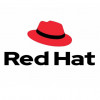introduces a major set of upgrades focused on offline AI
10.1 Release Notes
RHEL 10.1 Summary
RHEL 10.1 introduces a major set of upgrades focused on offline AI, faster hardware integration, stronger security, and improved developer tools.
The biggest highlight is the offline RHEL command-line assistant, now in developer preview for Red Hat Satellite customers. It provides AI-powered guidance entirely in air-gapped environments, with no cloud connection required. Its context size has also expanded from 2KB to 32KB, allowing it to work with larger logs and more complex tasks. (Also available in RHEL 9.7.)
RHEL 10.1 also brings vendor-validated AI accelerator drivers for NVIDIA, AMD, and Intel, making GPU/TPU/NPU setup much easier and more reliable.
Image mode receives two important improvements:
- Soft-reboots via systemd, allowing updates without a full restart
- Reproducible container builds, producing identical images for improved security and consistency
Developers get refreshed toolchains including Go 1.24, LLVM 20, Rust 1.88, GCC 15, .NET 10, Valkey 8, and Node.js 24.
Security is further strengthened with enhanced post-quantum cryptography (PQC) for TLS, plus TPM and vTPM support in RHEL 9 and 10 cloud images to better protect cryptographic keys.
Finally, RHEL 10.1 introduces a new image builder CLI (tech preview) that simplifies creating consistent images across clouds and supports CI/CD integration.
Overall, RHEL 10.1 continues Red Hat’s push toward secure, consistent, AI-ready enterprise Linux.


